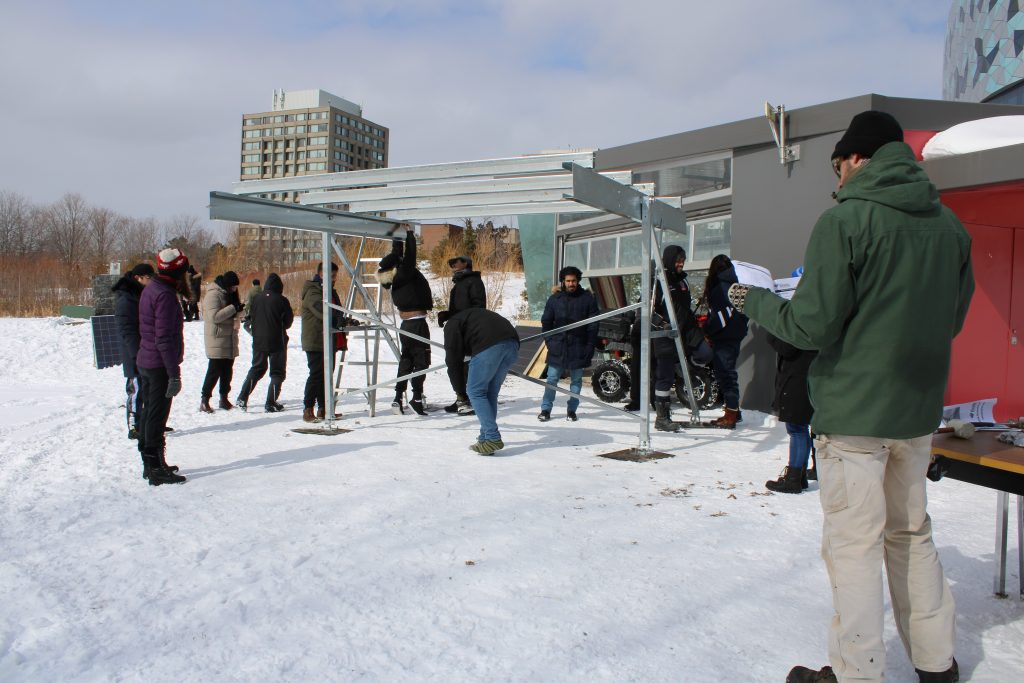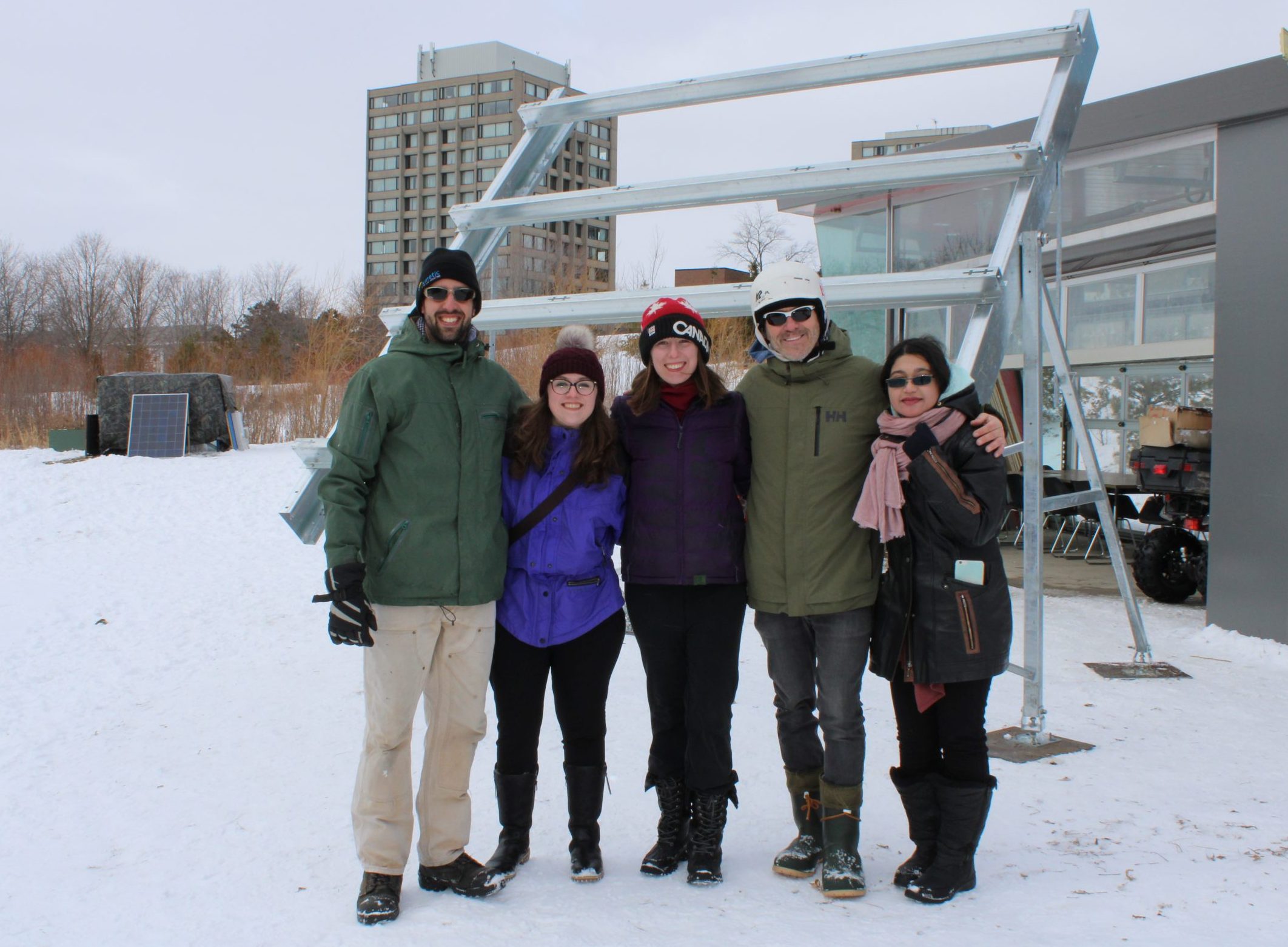
Written By: Andrew Cahill, Green Careers Officer
Back in February, before physical distancing measures came into effect, I had the opportunity to lead a group of York University students in the construction of ground mounted, seasonally adjustable racking for a solar PV array on their campus. The students were from the Faculty of Environmental Studies and were either pursuing an undergraduate or a master’s degree.

Prior to the construction project, the group took part in Relay’s Solar Installation Crash Course. They saw the steps of an installation, held the actual components that go into a system, and learned terms that are regularly used by industry professionals.
“The main takeaway that I got from participating in the training and installation was the quintessential message that without collaboration a project like this would not be possible. It was amazing to see how everybody got along so easily, and within 4 hours we had created a solar project!
We truly put to practice what Margaret Mead eloquently wrote, “Never doubt that a small group of thoughtful, committed citizens can change the world; indeed, it’s the only thing that ever has,” shared Codrina Ibanescu. Codrina is a York University student and one of the participants.
Here are a few terms the students learned which are used by solar energy professionals:
Photovoltaic (PV): refers to the process of converting the sun’s light energy into electrical energy.
Module: a single solar panel.
String: when multiple modules are connected in a series circuit.
Array: the entire solar PV system.
Ex. that roof has an array with 2 strings, each with 15 modules.
Balance of System (BoS): the components of a solar PV system that don’t produce electricity or have a current flowing through them. This could include ballasts (weights that keep an array secured to a flat roof), flashing (a flat piece of metal which prevents water from leaking through the roof), and racking (the aluminum rails that modules are secured to).
Inverter: the electrical component that converts the direct current (DC) produced by the solar array into alternating current (AC) which is used in our homes and in the utility grid.
As mentioned, the racking was for a ground mounted array that can be seasonally adjusted. Why is it necessary to adjust the angle of the array depending on the season? Solar panels are more efficient and produce maximum electricity when they are perpendicular to the light source.
We know that the sun’s height in the sky is different depending on the season. Here in the northern hemisphere, the sun is higher in the sky during the summer months and lower during the winter months. In order to produce the most electricity from an array, the angle will need to change throughout the year. In the summer we want the array to be at a smaller tilt angle, and conversely during the winter we want it at a larger title angle. This also explains why solar arrays in the northern hemisphere are always angled toward the south, and arrays in the southern hemisphere are always angled to the north.

This initiative is part of the Faculty’s dedication of providing experiential learning opportunities to its students. Even at the university level, students want to learn by doing. They become empowered by using tools and real-world components, and by seeing the fruits of their labour. This workshop and construction project occurred on a Friday evening and Saturday morning, and students didn’t receive any grade or school credit for their participation. Everyone who attended took time out of their weekend to gain real-world skills outside of the regular classroom environment.
The seasonally adjustable racking system was provided by Kinetic Solar.

